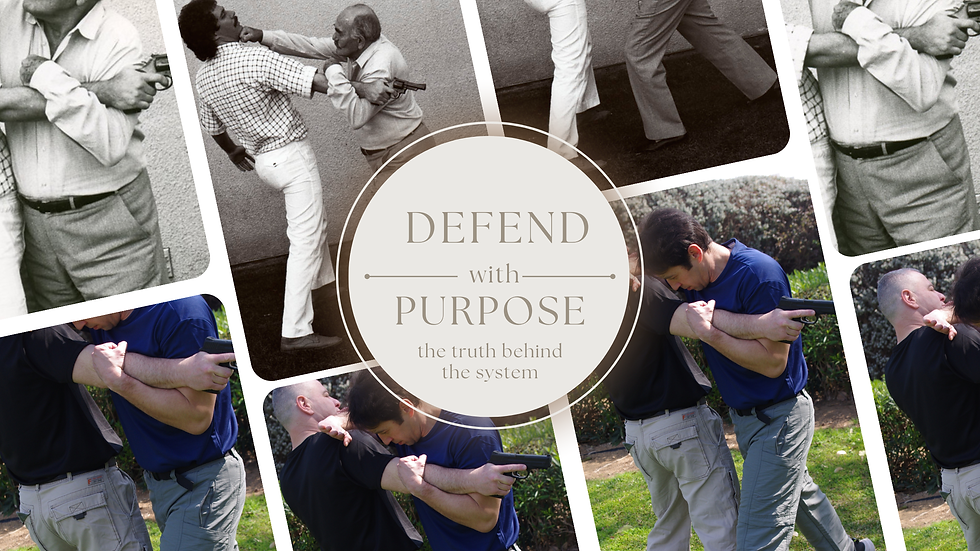What Is Real Krav Maga—and Why It Still Matters
- Ilya Dunsky

- May 22
- 3 min read

In my personal—and yes, subjective—opinion, Krav Maga is an extraordinary system. Built on natural instincts, simplicity, and adaptability, it empowers anyone to defend themselves—regardless of size, gender, profession, or background.
A good instructor will find a solution that works for you, while a great instructor will teach you how to recognize threats and choose the most effective response the system has to offer.
It’s no surprise that Krav Maga has become one of the most popular self-defense systems in the world. But with popularity comes both reward and risk.
Imi Lichtenfeld, the founder of Krav Maga, had a clear vision: a world where everyone could defend themselves, and where evil would not prevail. The system’s popularity helps bring that vision to life—but it also comes at a cost.
Because Krav Maga is now a well-known name, many want to be associated with it. Some claim to teach it without proper training. Others began with Krav Maga but have changed it so drastically that it no longer follows its core principles—yet they continue to use the name.
Humans are naturally drawn to what’s popular, but we also have a tendency to criticize it—especially when it’s easy to do.
Today, the term “Krav Maga” has become murky. Some people no longer know what it truly means, while others use the name for recognition without honoring its values.
To me, it’s simple: if someone claims to teach Krav Maga, there should be a clear and direct connection to Imi and his students. Being an instructor in the IDF doesn’t automatically qualify someone to teach civilians. The military instructor course is valuable, but it’s short and focused on combat needs—not equivalent to long-term civilian instruction.
More than lineage, what defines real Krav Maga is its principles—both general and specific. If you're not applying those principles, you're not teaching Krav Maga. And that’s okay. Maybe what you’re teaching is something new—even something better. I wish you success. Just be honest. Give your system its own name.
Another trend I’ve noticed is individuals trying to “prove” that Krav Maga doesn’t work—usually those who don’t actually understand it. They take a technique out of context, often something seen online, and mock it instead of presenting their own methods constructively.
But there’s no single “right” way. Life would be dull if there were only one method of self-defense, one way to train, one way to move or react. Let’s build each other up—not tear each other down.
One debate that comes up often is about simultaneous counterattacks. Critics argue they’re unrealistic in a surprise attack—and they’re right. If someone ambushes you and you’re completely off guard, you might not respond at all. That’s reality. But the real question is: what happens after that first hit?
A core principle of Krav Maga says: “If you take the first hit, don’t take the second.”Keep going. Keep fighting. Keep trying.
Most real-world situations don’t come out of nowhere. There are usually signs—verbal threats, aggressive body language, a push, or even a slap. In those moments, there is a window to respond—and yes, sometimes with a simultaneous counter.
Some argue that a simultaneous strike lacks power. From experience, I can say: I’ve knocked people out through helmets with one. I’ve seen others do the same. But that’s not the point.
Krav Maga includes simultaneous counters, delayed ones, double controls with late counters, and sometimes, no counters at all. It all depends on the situation, your environment, your mindset, and your abilities.
There is no one-size-fits-all solution. And that is exactly why Krav Maga works.
Let’s not forget—Imi was a fighter, both in the ring and far beyond it. He developed Krav Maga even before the State of Israel existed, to increase people’s chances of survival and freedom. And it worked.
Since then, Krav Maga has been adopted by the IDF, Israeli law enforcement, elite security forces worldwide, and millions of civilians. It’s one of the most battle-tested systems in existence—not because it’s perfect, but because it’s effective.
That doesn’t mean we shouldn’t evolve. On the contrary—we must continue improving, questioning, and learning.
But let’s do that while honoring where it came from. Let’s respect what Krav Maga stands for.
And let’s never forget what Imi taught us—not just how to fight, but why we fight.






